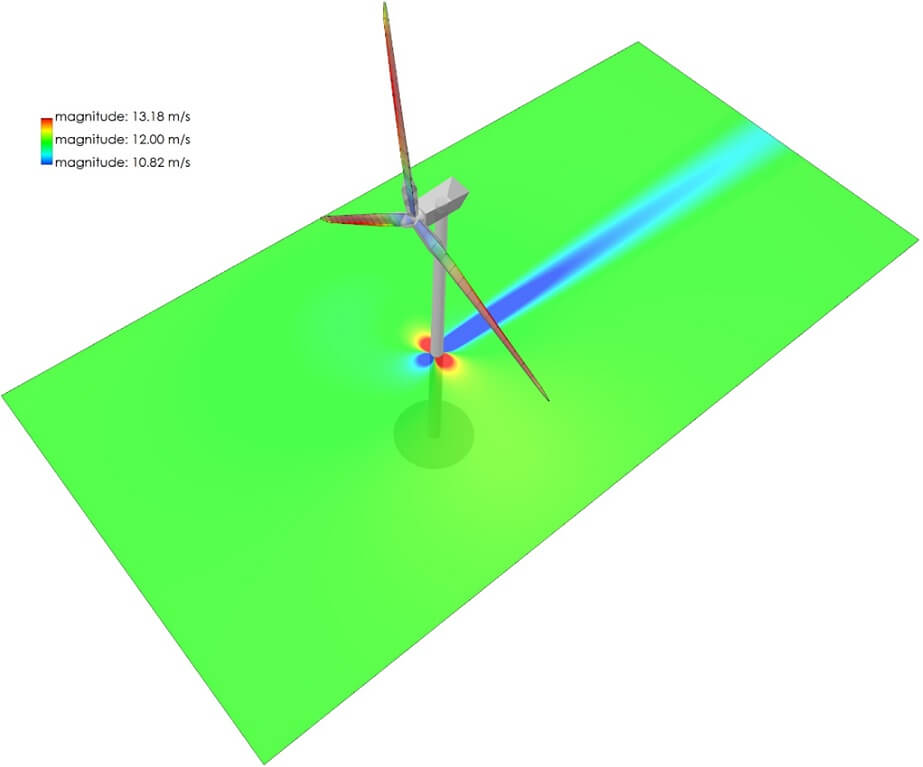Tower Influence
A tower shadow model, based on the work of Bak (Moriarty and Hansen1) is implemented in QBlade. This model is based on a superposition of the analytical solution for potential flow around a cylinder and a model for the downwind wake behind a cylinder, based on a tower drag coefficient.
For the potential flow around the cylinder contribution, the local velocity components \(U_{\mathrm{local}}\) and \(V_{\mathrm{local}}\) are affected by normalized velocity factors:
In the above equations, \(U_{\infty}\) is the free stream velocity and \(u\) and \(v\) are given by:
In these equations, \(x\) and \(y\) are the upwind and crosswind distances normalized by the tower radius at the relevant height. \(C_d\) is the drag coefficient of the the tower.
In addition, the tower produces a wake deficit in the downstream direction. The deficit inside the location of the wake is given by:
where \(u_{\mathrm{wake}}\) is given by:
In the above equation, \(d=\sqrt{x^2+y^2}\) is the non-dimensional radial distance from the evaluation point to the tower center. The wake width is assumed to be \(\sqrt{d}\).
The tower shadow model only affects velocity components that are normal to the tower centerline; the z-component of the velocity, parallel to the tower centerline, remains unaffected. The tower shadow model is only used when the z-component of the evaluation point is smaller or equal to the tower height. An example of the tower shadow velocity deficit is shown in Fig. 11.

Fig. 11 Visualization of the tower shadow model; showing velocity magnitude.
An application of the tower model, including a comparison to CFD simulations and experimental data is found in the work of Klein et al.2.
- 1
Moriarty and Hansen. AeroDyn Theory Manual. Renewable Energy, 15(January):500–36313, 2005. URL: http://www.nrel.gov/docs/fy05osti/36881.pdf.
- 2
Annette Claudia Klein, Sirko Bartholomay, David Marten, Thorsten Lutz, George Pechlivanoglou, Christian Navid Nayeri, Christian Oliver Paschereit, and Ewald Krämer. About the suitability of different numerical methods to reproduce model wind turbine measurements in a wind tunnel with a high blockage ratio. Wind Energy Science, 3(1):439–460, 2018. doi:10.5194/wes-3-439-2018.